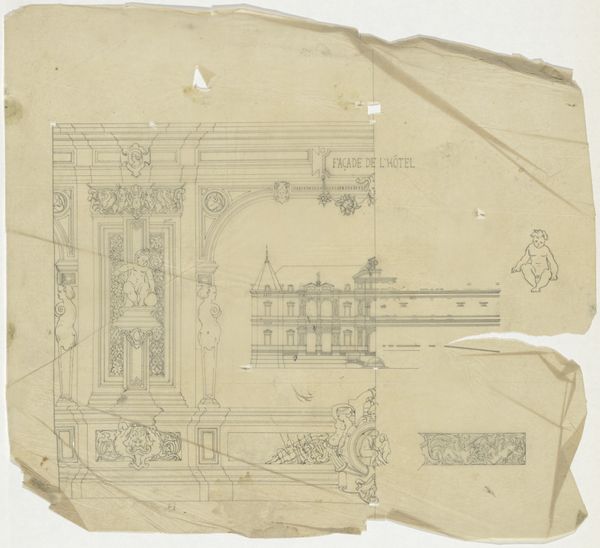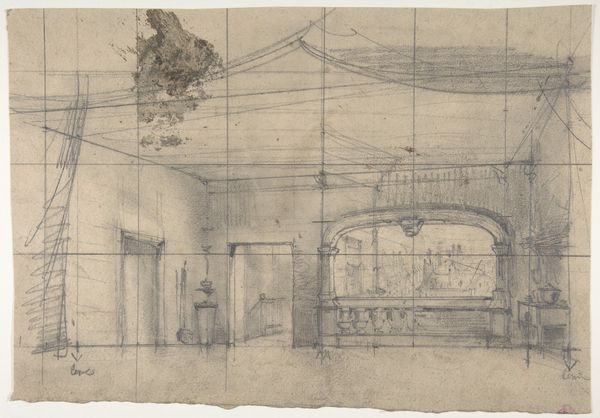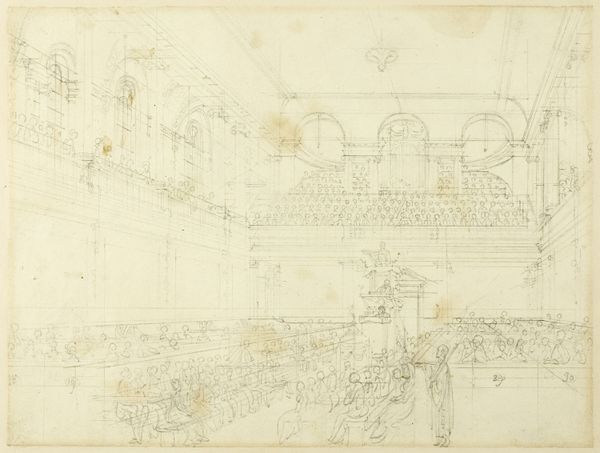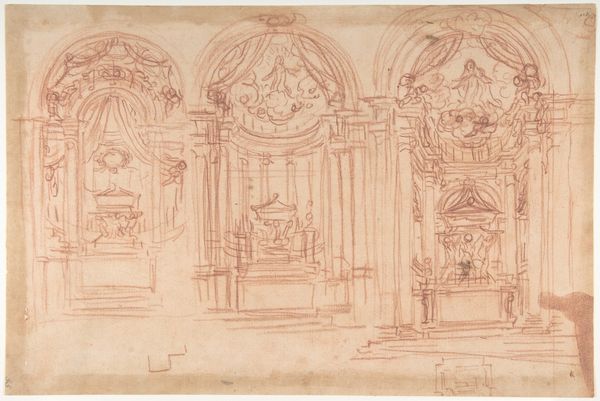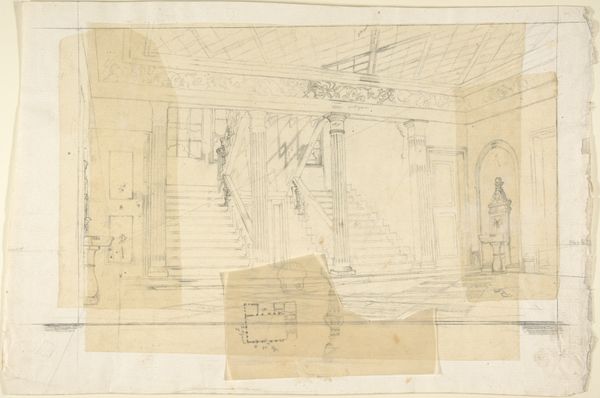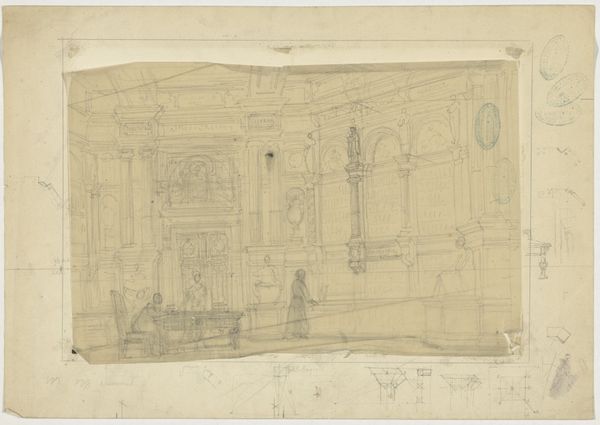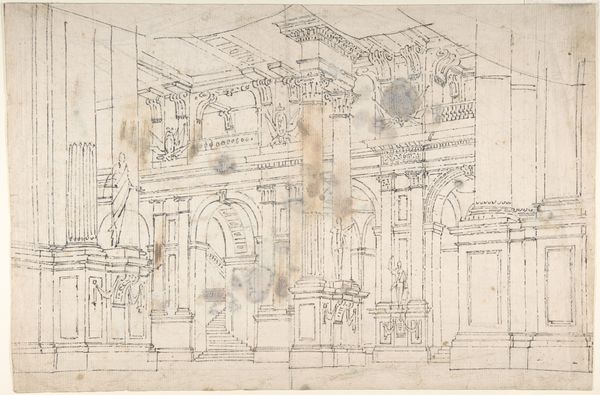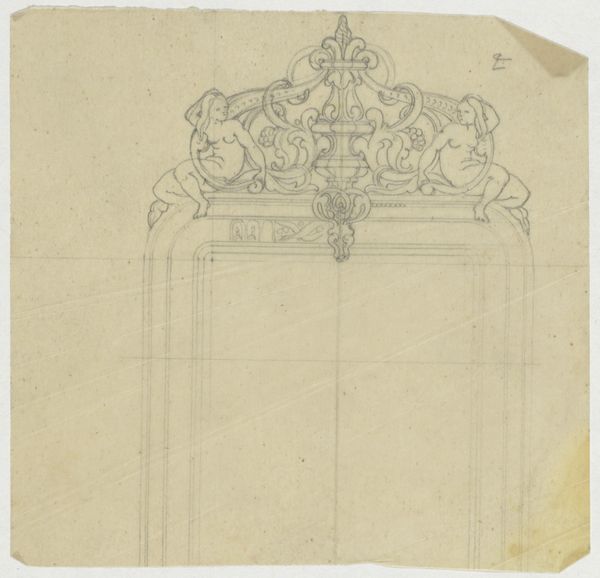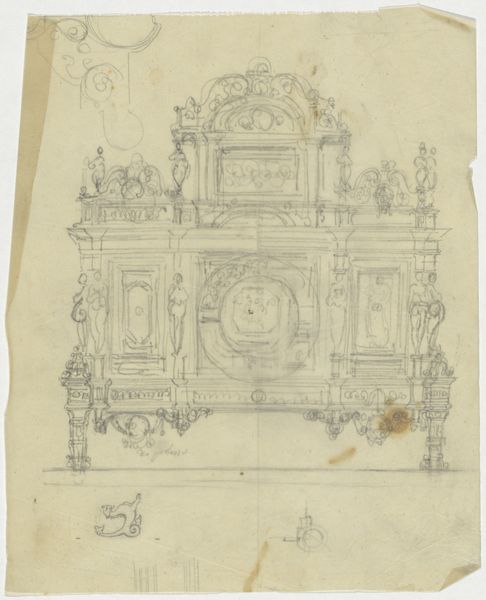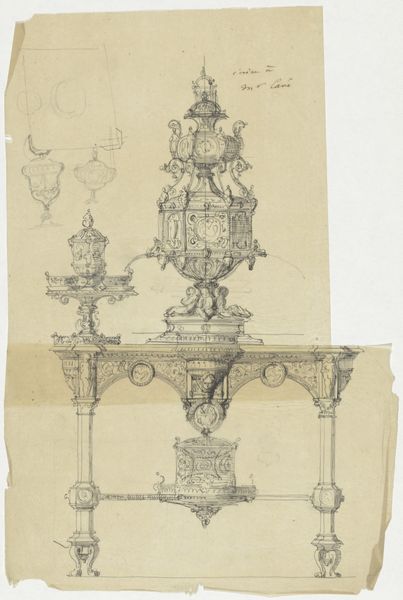
drawing, pencil, architecture
#
drawing
#
neoclacissism
#
form
#
pencil
#
line
#
architecture drawing
#
cityscape
#
architecture
Dimensions: height 295 mm, width 433 mm
Copyright: Rijks Museum: Open Domain
Editor: This is "Façade," a pencil drawing on paper, dating from about 1830 to 1850, by Firma Feuchère. The drawing’s incomplete state gives it a somewhat ghostly, fragmented feel. What strikes me is how the artist is seemingly exploring power through architectural grandeur. What do you see in this piece? Curator: It is tempting to look at this image through the lens of class. Architecture, particularly Neoclassical architecture from this period, embodies power. Public buildings served as tangible reminders of existing hierarchies. How did structures serve political purposes? Who benefited, and who was excluded? Editor: So, the incomplete nature of the sketch…it reflects perhaps an instability or a critique of those power structures? Curator: Potentially. Consider that the façade is also, in a sense, a performance, a curated display. What happens when that display is revealed as incomplete, or even deceptive? How might this "unfinishedness" reflect the societal cracks that existed beneath the surface of the Neoclassical period’s carefully constructed image of order? The visible decay also opens a space for reflection, maybe a warning, on the impermanence of societal structures. Editor: That's a really interesting perspective, I had focused only on the solid construction! But you're suggesting the image also carries ideas about the fleeting nature of authority and status? Curator: Precisely! And we should consider whose stories are represented and whose are conspicuously absent in such idealized settings. Thinking about art history allows us to think more deeply about these topics in our society. Editor: This gives me a lot to consider. It challenges the idea of simply admiring a drawing without questioning what it represents. Curator: And how it actively shapes our understanding of power, space, and history.
Comments
No comments
Be the first to comment and join the conversation on the ultimate creative platform.


